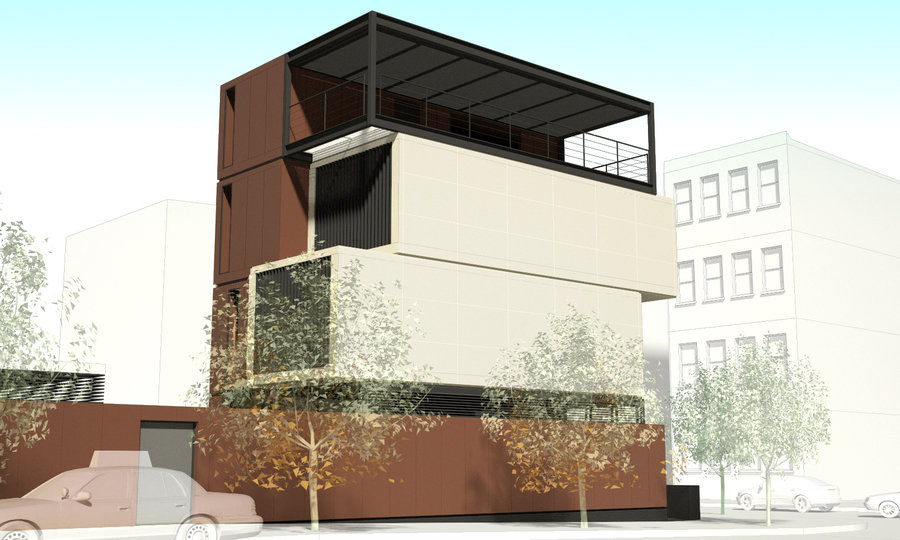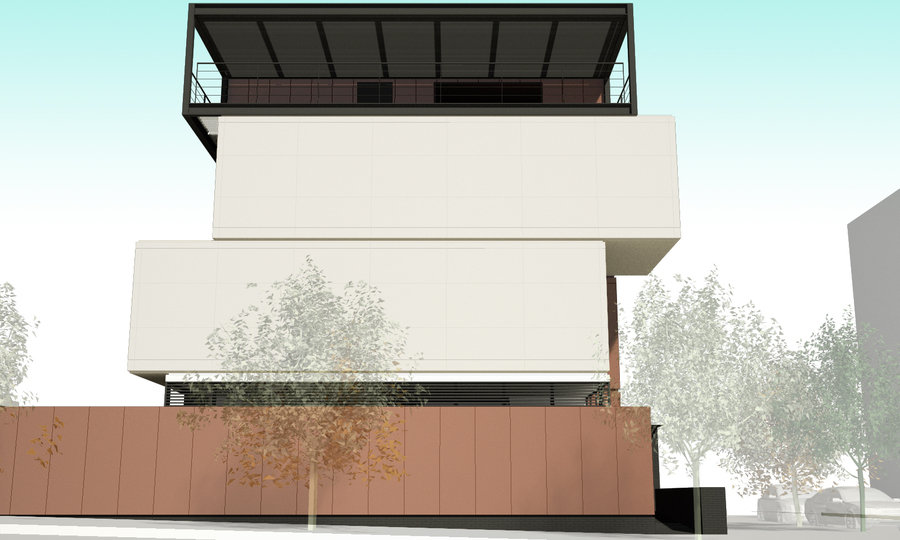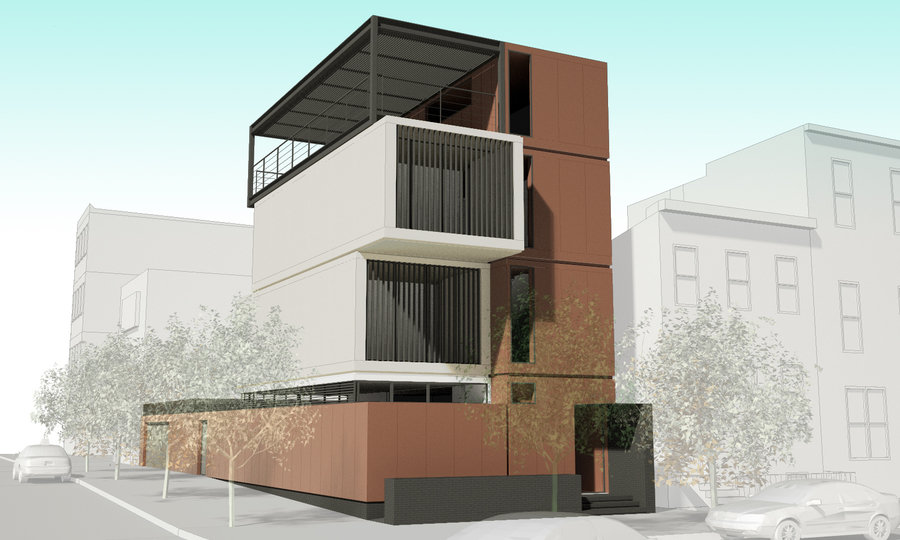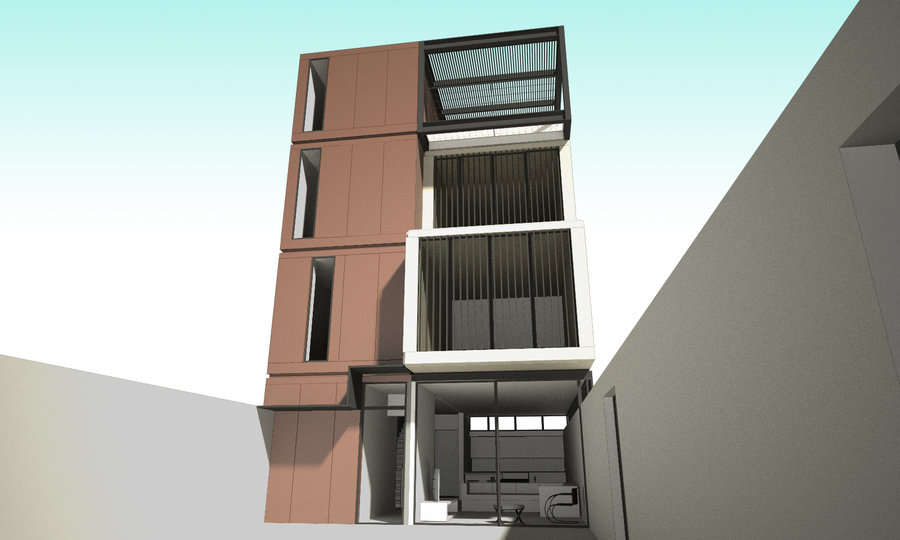As defined by the US Department of Energy, “a net zero-energy building (ZEB) is a residential or commercial building with greatly reduced energy needs through efficiency gains such that the balance of energy needs can be supplied with renewable technologies.” Basically the ZEB concept asserts that buildings can meet all their energy needs from low-cost, locally available, nonpolluting, renewable sources such as solar or wind power.
This structure is approximately 4,000 square feet, and responds to a complex program, incorporating a studio/workshop, offices for a digital business, garages and an apartment, as well as outdoor green space. The form is inspired by shipping containers, an integral part of the Red Hook landscape that is largely defined by its active working port. The building is made up of modular units that are stacked and shifted to create a variety of terraces and angles designed to take advantage of the area’s impressive harbor views.
The project is designed by the award winning New York firm, Garrison Architects, located in DUMBO, Brooklyn. “The Red Hook project draws from several promising trajectories – abstract modernism, modular construction, and zero energy consumption. By combining state of the art approaches to all three in one structure we have moved the potential for affordable, ecologically sound, urban dwellings several steps forward,” said James Garrison, Principal in Charge of Garrison Architects.
Simple and cost effective sustainability strategies are used to conserve and produce energy, conserve resources, and create a healthful environment. This sustainability approach was developed though an extensive research project that included digital energy modeling, detailed life cycle cost analysis of construction components and their related maintenance and replacement costs.
Some of Red Hook Green’s features include:
8kw annual photovoltaic generating capacity, grid connected 8kw annual comprehensive household energy budget including heating and air conditioning High performance building envelope that eliminates thermal bridging and achieves an average thermal resistance of R50 Wall and roof systems vented to eliminate moisture build up and use “smart” moisture barriers to allow air movement in warm months. Integrated south facing thermal solar wall generates warm air that is fed to the building ventilation system. Heating and cooling provided by high efficiency electric heat pumps. Whole house heat exchange ventilation system insuring air quality and recovering energy from conditioned air.




R
RSS Feed
h
Follow Us on Twitter
L
Like Us on Facebook
